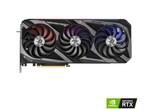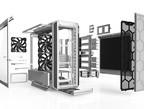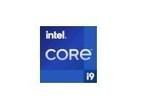Ultimate Gaming/Workstation Desktop PC
- 0 Collaborators
Powered by the Intel Core i9-12900K and complimented with an RTX 3070 GPU, the main design focus for this project will be Gaming/Streaming orientated, along with room for virtualization, home lab projects, and other productivity tasks, using a multimonitor setup. Noise reduction will be prioritized. ...learn more
Project status: Concept
PC Builds & Mods, Game Streaming, Games, Overclocking, PC Concepting
Groups
Student PC-Build Challenge
Intel Technologies
12th Gen Intel® Core™ Processors,
Intel powered desktop PC
Overview / Usage
The main goal of this build is to create the ultimate multi-tasking machine for productivity, streaming, and gaming. I am trying to achieve a clean, reliable project build with parts from reputable vendors.
Overall, the project will have some of the latest hardware currently on the market combined to form a powerful workstation PC. The proposed project will be quiet (Be Quiet 802 Case), strong in graphical performance (RTX 3070), and able to handle extreme multi-tasking (i9-12900k & 32GB DDR5 RAM). The central theme will be a sleek stealth build with minimal RGB lighting (can be turned off). The project will be a centerpiece built in a robust white case and very upgradable, with little compromises (Big thanks to the project's sponsors for providing essential component hardware). However, with a limited budget, I'll be reusing most of my current setup (mainly peripherals) to customize the project PC to my needs best.
My main inspiration for this project is to improve my technical familiarity/knowledge (ex. building hardware), a skill that has become increasingly more valuable in our current digital/online era. This inspiration comes from being a long-time tech enthusiast from watching tech influencers like Paul's Hardware, which inspired me to build my first PC. Creating your PC can be rewarding and easy (following the instructions carefully). By knowing how to make a PC setup, you become your tech support, have complete customization control, and have the flexibility to upgrade individual components in the future. Those factors help extend the PC's life by swapping and upgrading parts over time.
My primary audience is those experimenting and building to my craft (PC building & hardware), including tech enthusiasts and PC builders. This project will potentially be my second complete PC build.
I also wanted to take the time to say thank you for allowing me to showcase my project. I would also like to thank Intel for hosting the design contest and the sponsors providing the build components.
Methodology / Approach
I first approached this project by defining my current needs (as a current Cybersecurity student, an avid gamer, and a casual streamer), which streamlines into a few main build objectives.
Main Goals/Objectives
The project has three main goals/objectives to achieve:
-
Run the latest games
-
Be able to stream the latest games (streaming for fun)
-
Using Intel VT to run multiple virtual machines for Cybersecurity/programming classes
By assembling a computer, I'll be achieving one of the best ways to get the most performance for the money. The build will be using both new and reusing existing hardware, and the setup space will be limited to the current desk dimensions. My primary approach is combining hardware and setup design to combine school, gaming, streaming, and productivity into an ultimate setup.
I will be using a hardware approach (for part selection & compatibility) and a setup design approach (layout & functionality/usage) to accomplish these primary goals. The hardware approach will be limited to parts readily available. Specific components (ex. 3080ti, DDR5 RAM) exceed the budget.
All parts have been checked for compatibility (using PC Part Picker, attached). Using a PC planning tool, like PC Part Picker, made sure all the components would work together. The tool helps find the best prices for each system component and is a great way to show off a planned concept/future build to others.
Hardware Approach (Focus on CPU, Motherboard, GPU, and RAM)
**(CPU) **1x Intel Core i9-12900K (12th gen Intel Core Processor)
Why choose Intel? Simple, the CPU is 'built for the next generation of gaming' -Intel.
The Intel Core i9- 12900K (Alder Lake) currently holds the performance crown in the CPU market and features many improvements from the previous generation (11th gen Intel Core Processors). The fastest CPU with outstanding multi/single-core performance with 24 threads makes the Intel Core i9- 12900K the perfect choice for any creative workflow. The central brain for any computer system, the CPU, is a key performance component.
The Intel Core i9- 12900K has plenty of processing power with 16 cores (8 Performance & 8 Efficient cores). It will run multiple processes and virtual machines simultaneously (Intel's Virtualization Technology). The large 30MB (shared Intel Smart Cache) cache will significantly increase the CPU speed and help reduce the computer's latency, especially when streaming. The processor also supports Virtualization Technology (VT), which is ideal for any virtualization work/projects and can maintain a smooth-running environment without issues or conflicts with its processing capacity.
Whether it be the latest AAA game or a simple email, the processor enables power with scalability and will be able to enhance game performance (Performance-cores) along with heavier multitasking capacity (Hyperthreading, Efficiency-cores). One of the new features of the 12th gen Intel Core Processor is the Intel Thread Director, which places priority tasks on the P (Performance) cores and background tasks on the E (Efficiency) cores. Both the CPU and the DDR5 ram (with Intel's XMP 3.0) will be overclocked for additional performance, with the help of Intel's dynamic memory boost technology on the overclocking architecture of the Intel Core i9-12900K. The CPU will be overclocked (P core max turbo 5.1 GHz, E core max turbo 3.9 GHz), allowing additional performance.
The CPU would enhance my project design with powerful system performance, creating a snappier system (with smoother gameplay), and faster completion of creative media work/productivity tasks (video editing). Having a powerful CPU is very helpful for streaming, as it will allow smooth gameplay while maintaining video resolution and FPS.
Some photo and video examples are provided to showcase the project (Main focus on Intel Core i9-12900K processor)
(RAM) 2x16GB Corsair DDR5 RAM
RAM is the high-speed storage that the CPU can directly access (applications) and is another essential component determining the performance of your system. The project build will use 2x16 GB DDR5 RAM sticks in a dual-channel memory configuration, running at a frequency of 5200 MHz. Intel's XMP 3.0 allows configuring XMP profiles for stable and solid RAM speeds (max of up to 4800 MT/s). There will be room for additional upgradability as the build occupies only 2 of 4 slots on the motherboard. With some of the fastest (currently, DDR5) 32 GB of total RAM in the system, the build will simultaneously run multiple processes/virtual machines without worrying about insufficient memory and internal bottlenecks (especially when streaming). DDR5 has a max capacity of up to 128 GB per DIMM slot (vs. 64 GB per DIMM slot in DDR4), double DDR4s.
(GPU) 1x Asus GeForce RTX 3070 8 GB ROG STRIX GAMING GPU
Picking the right GPU is essential, as the component is the dedicated processer for many applications, like gaming, video editing, data processing, and accelerated graphics rendering.
The RTX 3070 will enhance my design by providing the graphical processing power for extreme gaming/productivity and powering a multimonitor setup (plenty of screen real estate). An 850W PSU will be plenty of power to drive the RTX 3070 GPU. Nvidia's RTX technologies (DirectX 12) will help deliver fast performance, realistic quality graphics (Nvidia DLSS), and a better streaming environment (Nvidia Broadcast).
The powerful GPU performance (with 8 GB GDDR6) will lead to a more immersive experience on stream, playing the latest games at 4k/1440p (AAA games like Halo Infinite, Cyberpunk 2077, Metro Exodus). The GPU will power three monitors and help display applications with better resolutions (Limited to 1440p based on monitors used).
A powerful GPU is essential for streaming, allowing great gameplay and quality recording (Ex. ShadowPlay). A potential GPU upgrade is also possible with this system.
(Motherboard) 1x MSI MPG Z690 CARBON WIFI ATX Motherboard
Bringing all the build parts together, MSI MPG Z690 CARBON WIFI ATX is a great mid-range motherboard compatible with the Intel Core i9-12900K (LGA1700 socket). The motherboard overall has an ultra-clean look with minimal RGB.
The Z690 platform (Intel Z690 chipset) supports overclocking CPU and memory (DDR5), allowing more extraordinary system performance. With many built-in features, including integrated Intel Wi-Fi 6E support for a wireless network configuration and DDR5 support(4 DIMM slots) for fast memory speeds, the Intel Z690 chipset also supports PCIe x16 with three slots.
The Z690 motherboard supports Windows 10 64-bit or Windows 11 64-bit (future upgradability) and DirectX 12. The motherboard also supports RAID 0,1,5,10. (Will be using cloud-based backups)
There are many connectivity features, including USB ports (3.2, 2.0), 6 SATA slots, and 5 M.2 slots supported by the ATX sized motherboard, which allow plenty of future storage expandability.
**(Storage Setup) **2 x Samsung M.2 NVMe drives + 1 2 TB Samsung SATA SSD= total 3.5 GB system storage
The build will be setup up with a 500GB M.2 NVMe as the primary hard drive for Windows 10 Pro OS, a backup M.2 NVMe as the primary game storage, and a 2TB SATA SSD as the primary productivity storage for projects/classwork and also any backup storage. This setup will optimize any creative program's peak performance, efficiency, and fastest transfer speeds. RAID will not be setup; instead, the system will use cloud backups.
Using an M.2 NVMe drive as the primary boot drive ensures fast startups (PCIe 4.0) with plenty of memory capacity for a home lab. Using an empty M.2 NVMe drive for storing games ensures fast load times for the more frequent games played.
Using a large SATA SSD instead of a more expensive M.2 NVMe is a more cost-efficient solution for productivity tasks (documents/files) and another storage option for potential backups needed.
There will be plenty of room for storage expansion if needed, as the motherboard (MSI MPG Z690 CARBON WIFI) has support for up to 5 M.2 slots and 6 SATA3 slots.
Combining a powerful 16 core CPU, 3070 GPU, and M.2 NVMe storage can achieve all three listed goals. The proposed build will be a powerful, multitasking desktop machine that can run the most punishing games while co-streaming, intensive production processes, and multiple virtual machines for side projects and schoolwork. The three screens will provide plenty of real estate for productivity with a multimonitor setup.
**(Case) **1x be quiet! Silent Base 802 ATX Mid Tower Case (white) (will try to find a black version)
The case has a clean/minimalistic design with an interchangeable front panel and top cover, allowing different radiator configurations and fan placement. The solid panels will be used instead of mesh ones to reduce noise as much as possible. Includes three large case fans (Pure Wings 2 140mm), giving the case plenty of airflow, and insulation throughout the case's front and sides, allowing for maximum stability and noise dampening against vibrations. The large 140mm case fans that come included can move more air at a lower RPM (quieter). The large case size allows for better cooling performance and can handle many future expansions in a mid-tower format.
The be quiet! case has an excellent system for cable management and a PSU shroud to cover cables, quickly allowing a clean build look. It has an I/O port on the front that includes a fan controller. It has a custom and versatile motherboard tray that can be removed for a potential test bench and has up to 9 expansion slots (7+2) for any future expandability in storage.
**(CPU Cooler) **1x MSI MEG CORELIQUID S360
I will be using an AIO cooler in the build, allowing excellent system stability and quiet performance. An AIO Cooler has a very straightforward installation and aesthetically looks better. The MSI MEG CORELIQUID S360 also has a small IPS display screen customized to show a wide range of hardware system information (CPU temperature). Includes three fans (RGB can be turned off) attached to the radiator, adding a total of 6 fans (3 from the case) for excellent airflow for an overclocked build.
(PSU) 1 x SeaSonic FOCUS GX 850 W 80+ Gold Certified Fully-Modular ATX Power Supply
A PSU is mainly determined by the GPU placed in the system and is arguably the essential part of any system build. With an RTX 3070, plenty of power is needed for the setup. The total energy required for a system is calculated by a power supply calculator, which for this build comes to an estimated 600W recommended minimum (from PC Part Picker). An 850W PSU will be plenty for a single GPU system, with plenty of room for any hardware (Ex. GPU) upgrades in the future. Seasonic PSUs are among the most reliable and solid PSUs on the market. Its S3FC (fan control) allows the setup to be fanless (quiet operations) until a 30% load is reached, and its modular power cables allow custom configurations possible while reducing cable clutter.
Setup Approach
The build will use both new and existing hardware, and certain parts have proposed replacements depending on availability and budget. The setup space will be limited to the current desk dimensions in an L shape format.
A screwdriver and cable ties will be the tools needed to complete the project.
Proper anti-static and safety measures are enforced during the build.
Good cable management is critical for a clean setup. After all the components are assembled, a crucial double check will be made to ensure all parts are correctly plugged in.
Monitors are all used hardware and will be configurated as below (will all be VESA mounted), with two mounted stacked vertically and a smaller monitor on the side:
- Gigabyte M32Q 32 in 165Hz Gaming Monitor (2560 x 1440) IPS panel 0.8ms response time (Main Panel): Gaming/prominent display
- Pixio 329 32 in 165Hz WQHD (2560 x 1440) VA panel (Top Panel): OBS/discord, the main secondary display
- MSI OPTIX G241 24 in FHD 144Hz (1920 x 1080) IPS panel 1ms response time (Side Panel): Email/Chat (Zoom or discord)/Productivity
All three monitors will be connected to the desktop computer via DisplayPort to handle Quad HD (2560 x 1440) resolution and add frame rate support via Nvidia G-Sync or AMD FreeSync. (1440p target resolution at 144Hz frequency)
The central theme will be a sleek stealth build with minimal red RGB lighting. The proposed layout will maximize multitasking using an L-shaped desk, with all three monitors VESA mounted on clamps. Wi-Fi (Intel Wi-Fi 6E support) will be used as the primary internet connection, reducing cable clutter (clean theme) with a wireless setup.
Certain setup features, like microphone, speakers, and camera placement, have been placed in easy to adjust areas best for various workflows (streaming/gaming/productivity).
Visualization/Design Approach
Simulated pictures of the PC build have been attached to the project files. (From PC Building Simulator, not exact products featured)
Sketches of the proposed layout (have been attached) to get a rough estimate of the setup arrangement.
Some photo and video examples are provided to showcase the project (Main focus on Intel Core i9-12900K processor and GPU); products pictured were borrowed components.
Technologies Used
Technologies Used: (Intel)
- Intel 7 process
- Performance Hybrid Architecture
- Intel Thread Director (Performance-cores and Efficient-cores)
- Intel XMP 3.0 profiles
- Intel Rapid Storage Technology (SATA and PCIe storage)
- Intel Hyper-Threading
- Intel Virtualization Technology
- Integrated Intel Wi-Fi 6E support
(Provided) Hardware: (Intel and other manufacturers) (Depending on availability and budget)
- CPU: Intel Core i9-12900K 3.2 GHz 16-Core Processor
- CPU Cooler: MSI MEG CORELIQUID S360 56.2 CFM Liquid CPU Cooler
- Motherboard: MSI MPG Z690 CARBON WIFI ATX LGA1700 Motherboard
- Memory: 32GB RAM (2 x 16 GB sticks)
- Storage: Samsung 980 Pro M.2 NVMe SSD or WD Black SN 850 SSD (Depending on availability)
- Video Card/GPU: Asus GeForce RTX 3070 8 GB ROG STRIX GAMING OC Video Card (Depending on availability)
- Case: be quiet! Silent Base 802 ATX Mid Tower Case (white version)
- Power Supply: SeaSonic FOCUS GX 850 or Seasonic Focus PX-850 Power Supply (Depending on availability)
- Keyboard: Corsair K68 RGB Gaming Keyboard
- Mouse: Logitech G502 HERO Gaming Mouse
(Existing) Hardware: (Other manufacturers)
- CPU Cooler (Backup): Dark Rock Pro 4 or EVGA CLC 240mm
- Storage: Samsung 970 Evo 500 GB M.2 NVMe SSD, Samsung 860 Evo 2TB 2.5in SATA SSD
- Thermal Compound: Thermal Grizzly Kryonaut Extreme Thermal Paste
- Operating System: Microsoft Windows 10 Pro OEM 64-bit
(Audio)
- Headphones: Sennheiser HD 558 Headphones
- Speakers: Fluance Ai40
- Microphone: Audio-Technica (AT2035)
- Audio Interface: Scarlett 2i2
- Amp: SMSL AD18
(Video)
- Webcam: Logitech BRIO Ultra HD Pro Webcam
- Main camera: Canon Rebel T8i
(Peripherals)
- Keyboard: Corsair K70
- Mouse: Logitech G600
- Elgato Stream Deck + Capture card
(Monitors)
- (Main) Gigabyte M32Q 32 in (2560x1440) IPS panel
- (Secondary) Pixio 329 32 in (2560x1440) VA panel
- (Side) MSI OPTIX G241 (1920x1080) IPS panel
Software used:
- Nvidia GeForce Experience
- Steam
- Discord/OBS
- VirtualBox
Thank you for your time today reading about my project submission! I'm grateful for this opportunity, as it's always exciting to work with new technology! I would again sincerely thank you for the learning experience this program provides and its engaging format! A special thanks to the sponsors (Intel, MSI, Samsung, Be Quiet!, Seasonic, Asus, Corsair, Logitech, WD) for providing the components for the project concept and for the judges in their time spent for the Student PC-Build Challenge!






















